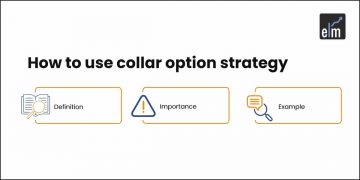In an interesting session as a part of the highly popular Face2Face series, conducted by Elearnmarkets, Mr Vivek Bajaj, Co-founder of Elearnmarkets, invited Mr Vishal Mehta, a successful stock market investor with many years of experience, to decode how to do Systematic Trading in Nifty 50 and Bank Nifty.
Today’s blog will basically take you on a journey of understanding how every concept in the stock market has a fundamental philosophy behind it, and why is it so important to know the answer to “WHY” before we end up doing anything in the stock market world or otherwise.
Diving into deeper concepts of options buying and options selling, Mr Mehta will further extend the discussion with the help of examples that will explain the various situations faced by the option seller and the option buyer and how to deal with those.
1. How to build a trading strategy for systematic trading?
According to Mr Vishal Mehta, everything has a fundamental philosophy. A very good friend who also worked as a technical analyst said that your trading system should be an extension of you and your life.
So, it is imperative to have a fundamental philosophy that should be converted into market observation. After this, make rules around it. Traders will be able to enter like Abhimanyu through those algo-rules, but they also have to come out.
So, risk management plays a significant role in stop losses. But when we define the rules by risk management, it does not mean that the journey is complete.
Traders have to take that for backtesting with software like python or amibroker, whichever is good for them. One must do backtesting because if it was used in the past, it is more likely to work in the future. So it is a higher probability and not a certainty.
When traders are backtesting, then they can also do tuning, but they should not super optimize it. For example, if the moving average is between 50 to 200 days and is run in software.
It will tell you that if the user had used 3 to 350 moving averages, it would have given them more profit, which is wrong because it is optimization.
When you complete the whole journey, you will realize systematic, rule-based trading is much more profitable.
2. Strategy for Directional Options Selling
For this strategy, Mr Vishal Mehta uses only one technical indicator, i.e. Supertrend. Supertrend is a volatility-based indicator.
It is also a trend following indicator and incorporating volatility. That is why it is a very important tool for option selling.
This indicator finds the average of the last 10 days and the closing of that period. It checks the status of the high to low.
If we see the chart daily, we should set the period to 10 days. The average true range is the status of the high and low. It gives a multiplier of 2-3 to the average true range.
So, whenever the line of super trend is going up in the bank nifty future, it is bullish and when it is below the line, and supertrend is above, it is bearish.
3. Strategy Rules-Selling Put Options
The rules for Mr Vishal Mehta’s strategy are as follows:
- His intraday strategy is to sell it on Wednesdays and Thursdays, but it should not be taken overnight. So now if it has an expiry date or a holiday on Thursday, you can also see this strategy on Tuesday.
- The time frame will be a chart of 5 mins. And the expiry date we are taking is weekly because it had the most theta decay.
- The rules are straightforward, when the supertrend (10,3) is positive or crossing up (BNF Fut>ST) at 9.20 am or later.
- First 5 minutes, you will only wait and not do anything. Then, at 9:20 or later you will check if the bank nifty is up, you will sell the put.
- But which put you will sell is the most critical question, which is the strategy all about.
- You round to the nearest 100 strike of the value of the super trend
- Stop loss is very important, and in options, he chose 2 types of stop loss. One stop loss is longer, and the other is trailing; when the market is in his favour, he will keep trailing that stop loss.
4. Example- Selling Put
Now, let us discuss how to implement this rule-based strategy with an example of selling Puts in Bank Nifty:
Let us take the chart for Wednesday, March 3rd. There was a gap up, and Bank Nifty opened at the 35,900 range and closed. We can see that the super trend line was the value of super trend 35519.
So, what we learnt is that the closest 100 has to be chosen for the strike, which is 35500. The algo will automatically go to 35500; if the market has gone above, then the put option will go down.
He got this signal at 9:20 and sold it in 205.9 because the super trend was going up and also, it was a Wednesday. So the initial stop loss will be 50% of 205.
The initial stop loss is very important because the trade can get squared off even if the market gets reversed. The whole day the market was up, and this option did not recover at all. The trailing stop loss took over the initial stop loss at a point.
So, when the market started coming in his favour, it started going down, almost at a close, because the super trend never gave the closing above it.
If the super trend had given the line at the time of options closing. He would have squared off my position.
You can also join our course on Certification in Online Options Strategies
5. Strategy Rules-Selling Call Options
The rules for Mr Vishal Mehta’s strategy are as follows:
So, reverse the same rules when the super trend turns negative at 9:20 or later.
We will round up to the nearest high call option and sell the call option. All the remaining things will remain the same.
You can watch the entire video here
Bottomline
We hope you found this blog informative and use it to its maximum potential in the practical world. Also, show some love by sharing this blog with your family and friends and helping us in our mission of spreading financial literacy.
Happy Investing!
You can also visit web.stockedge.com, a unique platform that is 100% focused on research and analytics.






